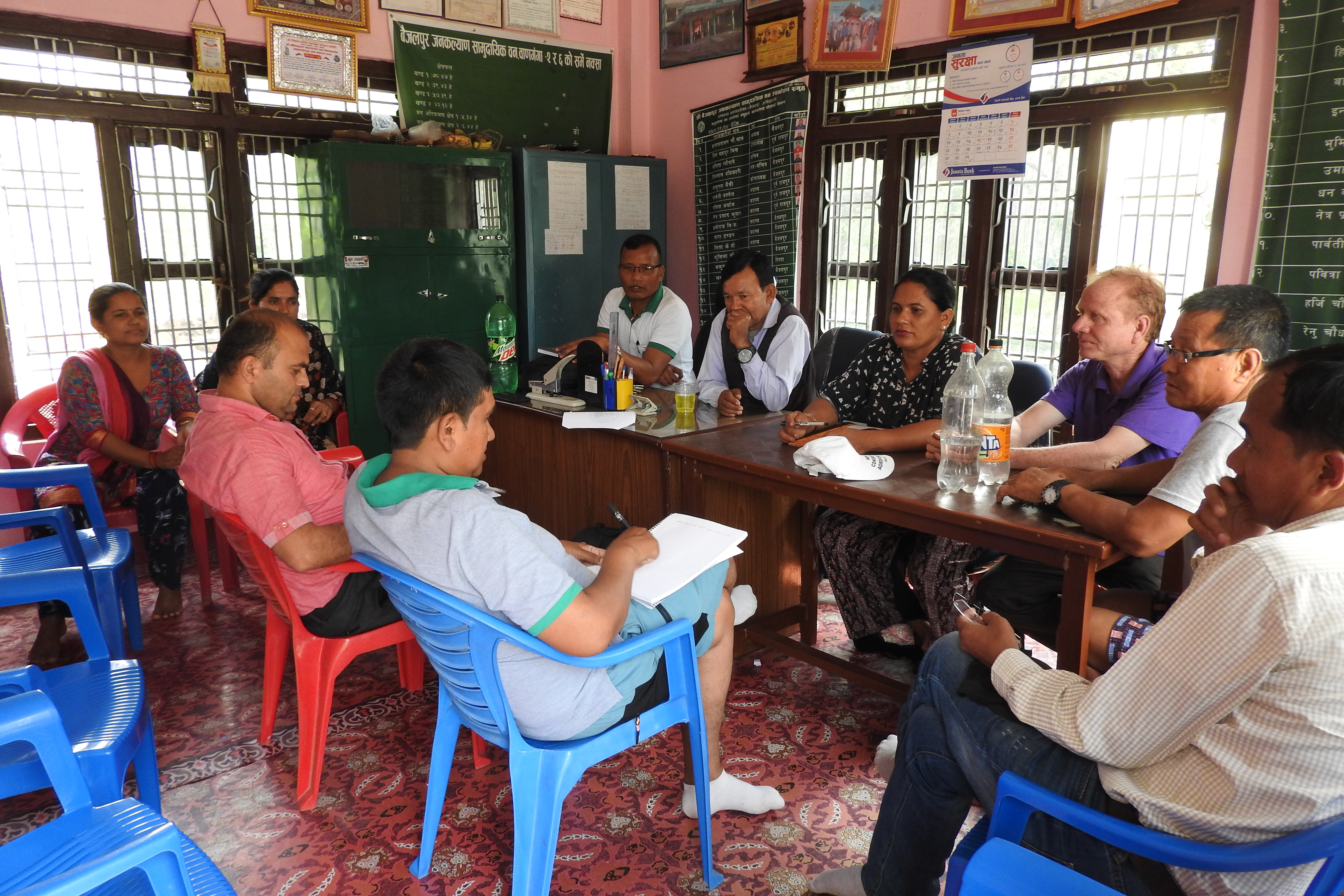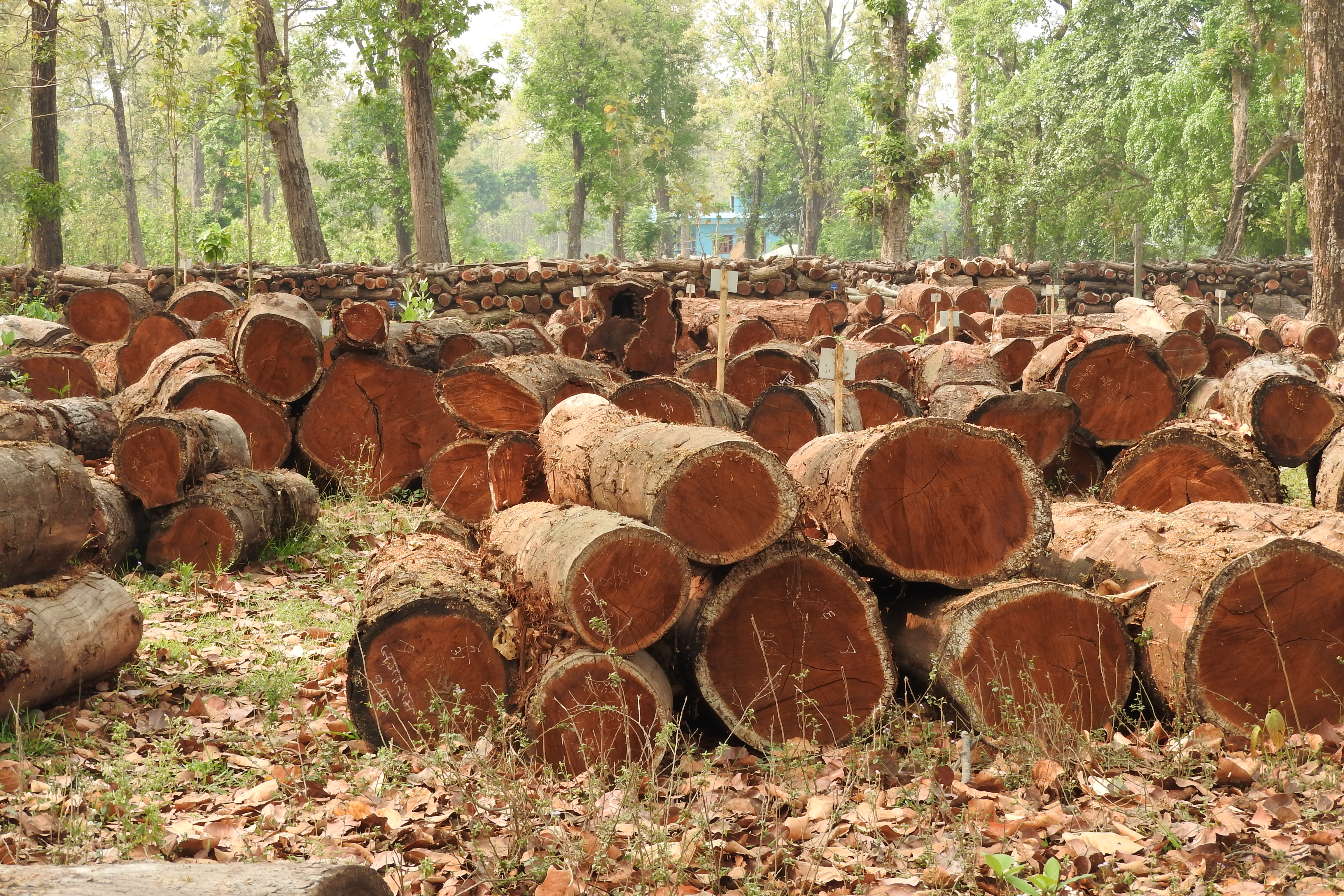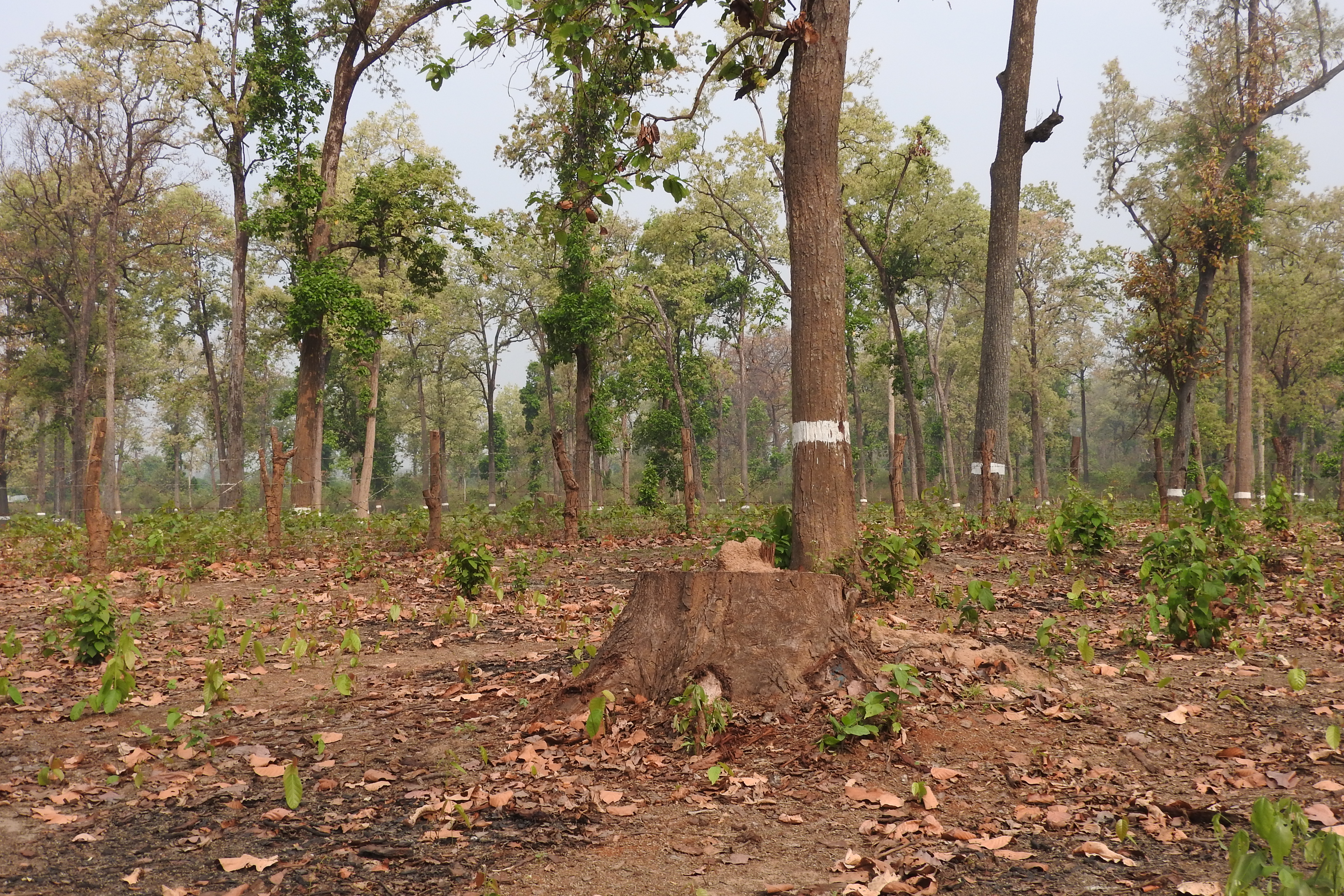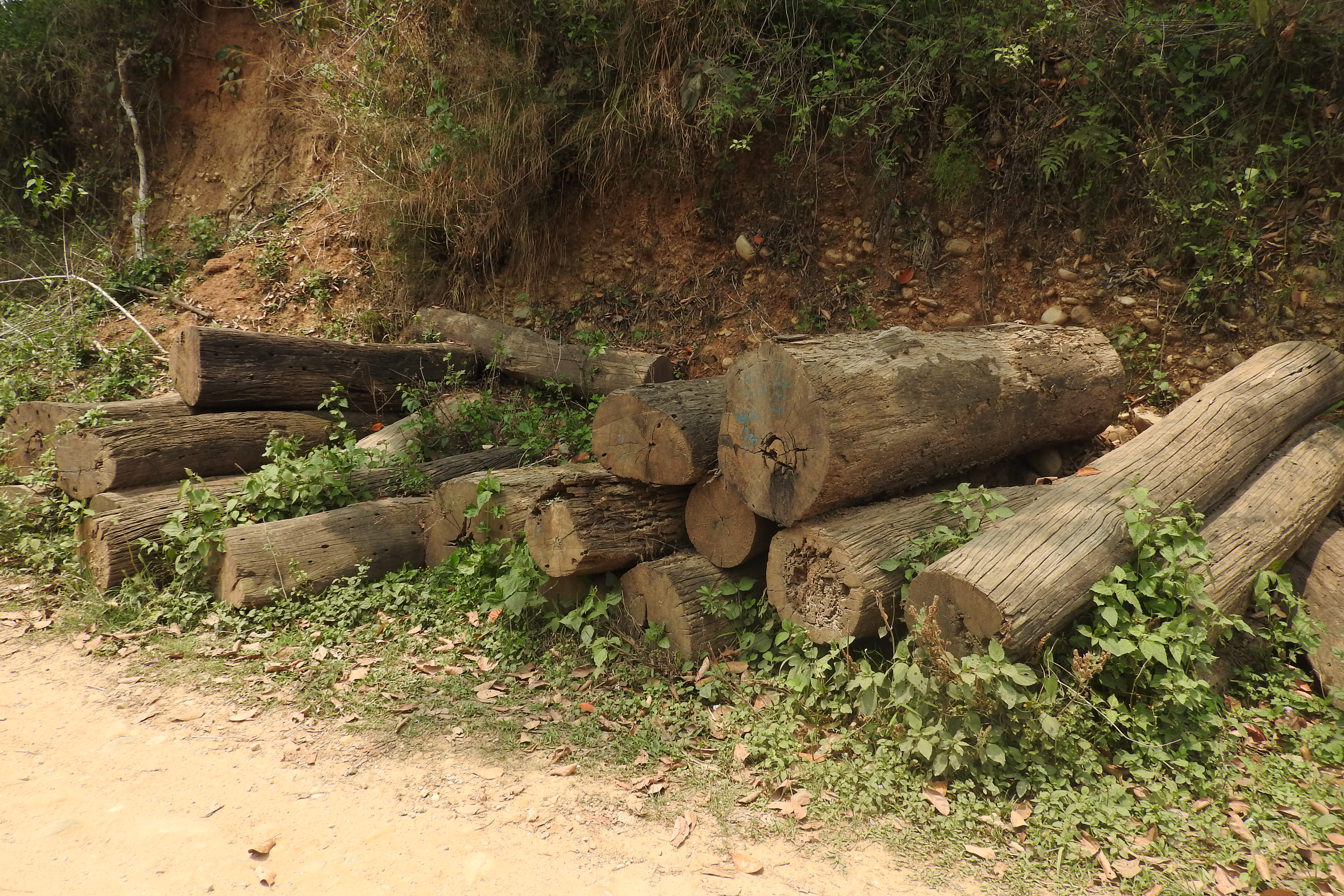The agenda of development and prosperity has gained greater currency in Nepal after the promulgation of a new constitution in 2015 that formally ended the relentless political transition. With the present government reiterating the slogan of ‘Prosperous Nepali Happy Nepal’, various sectors of nation including forest have directed its efforts towards achieving the same. As a matter of fact, the ministry of forest has initiated a discourse on ‘forest for prosperity’. Lying at the heart of this discourse is the agenda of scientific forest management (SFM) that aims to improve the forest productivity and generate employment thereby contributing to revenue generation. In light of the above, SFM has been accorded top priority in the districts of Tarai and Chure region.
The history of scientific forest management dates to some 7-8 years back from now. Amid severe criticism for leading the initiative for felling green trees in a planned manner, the practice of SFM continues to be on the top list of the forestry ministry particularly in Tarai and Chure region. Some of the pertinent questions that continue to strike me as an ardent forestry researcher amid this scenario include: How is the management of forest being made under the new regime? What are its positive outcomes and some critical issues to be addressed?
Of late, I got an opportunity to conduct field study on SFM practices in Kapilvastu, Makawanpur and Sindhuli districts along with colleagues from Forest Action. A week long study involved the visit of 2 collaborative and 6 community forestry groups across the three districts. The study became highly fruitful to understand the dynamics of SFM as majority of the groups were bracing up for felling trees and selling logs. The visit was made at a time when the winter had just ended and summer hadn’t completely begun- a favorable time for forest management activities in the field.
Based on interaction with members of community and collaborative forest groups, division forest officers, sub-division officers, federation of community forest users Nepal and some contractors, this article intends to dissect some important issues related to SFM implementation.
Scientific Forest Management (SFM) scenario in Tarai and Chure region
SFM was found to be a dominant trend of forest management in the community and collaborative forests of the districts in Tarai and Chure areas. Ranging from the forest user committee members to the officials from division and sub-division forest offices were found to be engaged in forest management activities. In fact, they have a very hectic schedule in this season. While some groups had already finished felling trees and preparing to sell them, others were busy in felling and logging. A handful of groups were found still waiting for the permission from the division forest office. Some possible reasons for this delay were also figured out during the visit which I will discuss in the following paragraphs. Kapilvastu district alone has set the target of selling 0.5 million cft timber for this year. During the visit, we came to know that the SFM was implemented in two collaborative and twenty community forests in the district. The depot of user groups and division/sub-division forest offices were filled with piles of logs. The technicians of sub-division forest office were analyzing the forest map and details of tree.
The forest officer at the division forest office was busy formulating a plan for SFM, handling matters related to approval for felling and issuing permission for sale. In this way, the forest technicians who used to work for forest preservation and legal issues were having a different experience of doing forest management.
Role of forest user groups and committee officials in forest management
Management of forest has created a new role in the existing community and collaborative forest user groups. Compared to the past, involvement in forest management has increased. However, we found that only the committee members, mostly serving in five key positions were active in forest management activities. In most of the groups, the general members were assigned as wage labour for felling trees, collecting and transporting logs. In other words, limited participation of the members were seen in SFM activities directly. Except few groups in Sindhuli, the contractor were heavily involved in felling, logging and transportation of logs to depot. The forest officials argued that mobilizing contractor in felling activities would make the entire process of SFM convenient. The groups are allowed to sale or distribute timber only after collection in depot. In this way, the shrinking participation of local participation in forest management could be inferred. Likewise, the provision of selling wood only through the depot inflicted huge economic burden to the forest users. Having said that, in some groups, users (members of the group) were found ignorant of SFM.
Decisive role of Forest Officials
According to the SFM directives 2071, the involvement of the technical staff from division forest office and sub-division forest office in forest management is required. Division forest office has the authority for approving the special management plan for SFM and permits for felling trees and selling timber. In the words of the members of the consumer committee, supremacy of forest officials remains uncontested. Referring to the directives for forest products collection and sale 2071, there is a systematic process of felling trees, selling and distributing timber but in practice it is controlled by forest officials in practice. During one year SFM cycle, the forest officials are involved around 6 times. First, based on the work plan, maintaining varying records of trees to be felled, putting stamp (tancha) on trees, preparing records of logs and verifying logs in depot is the beginning step.
After the logs are collected in depot, user groups need to seek approval of the forest division office for selling or distribution of timber. Groups first distribute timber for their members and the excess timber is sold outside of the group following the due process specified in the government directive (2071). This means, without the involvement of forest bureaucrats, user groups can’t do anything related to SFM.
Involvement of contractor and syndicate in practice
From the very beginning of cutting trees, contractors are involved in the process of SFM. In Tarai districts, the contractor’s rate for felling and collection to depot is Rs 140-155 per cft. In most cases, the same contractor gets the tender for selling timber. As per the rule, the wood that have been collected in depot should be sold at competitive price through tender process. However, there is a syndicate of contractor in this entire process in practice. Contractor bid the wood at the minimum price set by district forest product supply committee. For instance, the A grade Sal log has been priced at Rs 1500 in Kapilvastu and in most of the groups, the tender rate is 1500-1600 rupees for cft. Contractor bids with various nexus and takes timber at a minimum cost. A handful of groups were found to have sold wood at a competitive price that too of certain lots. One forest group shared an experience of full competition in the bidding process thereby being able to sell A grade wood at Rs 2700 per cft. This was only an exception though. Because of contractors syndicate, user groups are not getting competitive price and seeking help from their federation and the government to address the problem.
Dilemma of Community Forestry Federation
Federation of Community Forestry Users Nepal (FECOFUN) has remained a strong critics of SFM. In an interaction with Kapilvastu district federation, we found many confusions and contradictions within the federation officials. What is ironical is that majority of the officials have implemented SFM in their community forests. These officials wanted to experiment with the SFM practices. However, some other officials were strictly against this program. Amid this dilemma, the federation hasn’t been able to strongly voice its opinion on this new model of forest management. Particularly the federation has not directed its efforts towards discussing the ways in which the communities benefit from this model and the emerging challenges to tackle with the adoption of SFM. Hence, a clear lack of a strong mechanism to address the grievances of the forest users was apparent. In case of Sindhuli, slightly different view of the federation was found. More clarity and pro-active role in representing the ethos of the community was observed.
Discrimination between forest user groups
Majority of community forest groups practicing SFM sells the excess timber after distribution within the groups. But in some cases, the wood is sufficient only to fulfill the demand of the group and can’t engage in outside transaction. Owing to the big size and small forest area of such groups, they don’t sell outside. According to them, division forest office discriminates such groups. One of the forest group in Sindhuli criticised the division office for not giving approval for felling trees despite following all the required steps.
The group further complained that the office has issued permission to the groups who will sell timber outside and the contractors work for all process and documents. Although the office has cited the reason of limited human resource as the reason for this, the forest group is not ready to accept it. The suspicion has been further raised by the behavior of forest officials. These officials often ask to consult with other groups and follow the same. Upon asking the officials of other groups, they say that the contractor is responsible for all this setting. Nevertheless, this group is still waiting for the approval. Due to the prolonged delay, there is nothing to rejoice of SFM and officials of the group are ready to withdraw from SFM.
Management of wood allocated for district forest product supply committee
The forest product collection and sale directive require the forest user groups to allocate 25% of the total wood which remains after distribution in the community allocated to the supply committee. Based on the demand of the consumers within the district, the district forest product supply committee makes this wood available. Having said that, such wood was found to be laying in the depot of user groups without being sold by the supply committee in case of both Sindhuli and Kapilvastu district. Since there is no demand of such wood in the district, the woods couldn’t be sold. On the one hand, the wood accumulated for many years has become rot, the local community haven’t been able to obtain the income from the same on the other hand. In conversation with us, the forest officials even requested us to make some efforts in dealing with this problem.
Issues and Challenges of SFM
Lack of skilled manpower
As stated above, division forest offices have clearly expressed the unavailability of skilled human resource to effectively implement SFM. Only the graduates of B.Sc. forestry is mandated to formulate plan related to scienfic forest as per the existing provision. However, not even one-third of the available officer level technicians in Sindhuli and Kapilvastu can manage forestry scientifically according to the two DFOs. A huge gap in the human resource is evident. While there is an opportunity to engage the skilled technicians available in the market in SFM, how this will be accomplished and legitimized by the division forest office remains confusing.
Economically burdensome
One officials of Sindhuli’s community forest remarked that SFM is equivalent to ‘sharecropping’. Upon exploring this issue, we learned that SFM was being extremely difficult for some groups to handle financially. In the planning phase, a total of 0.5 to 1 million rupees cost is incurred. The implementation is equally costly. Likewise, the meal and allowances to be given to the forest officials who frequently came on visit involved a huge sum of money. In the districts of Chure, the process of transferring wood from forest to depot also required a lot of money. Distributing wood collected in the depot would cost at least Rs 700 per cft in the forest groups of Sindhuli though the consumers regard it very expensive.
Financial transparency
Economic transaction among the groups that have adopted SFM has definitely increased. In some groups, it has grown by two-three times. With increasing in transaction, there is a greater need to maintain the book keeping accounts in a transparent way including the expenditure. In this scenario, officials of division forest office and forest federation consider economic transparency and the judicious expenses as a burning challenge. They further state that most of the expenses are incurred development activities such as road, electricity and school for fulfilling the vested political interests of the user group officials i.e. committee members. This calls for additional transparency in financial accounts and expenditure including SFM.
Conclusion
SFM has created a new wave in the forest sector. While an enthusiasm has spurred among forest officials and committees, SFM has equally raised some pertinent issues and challenges. First, the heavy dependency of forest groups on the techno-bureaucrats have shrunk the space of the local groups in making self-decisions. Second, SFM is expensive for the use groups owing to the required expense and technical expertise. Third, the high-handedness of contractors in felling, selling and distribution of woods have deprived the local communities of getting benefits from the forest management. Fourth, the issue of financial transparency and management has emerged as a challenging issue for the various forest user groups. Hence, intensifying the discourses around the various aspects of SFM in the greater interest of community benefits has become urgent.






